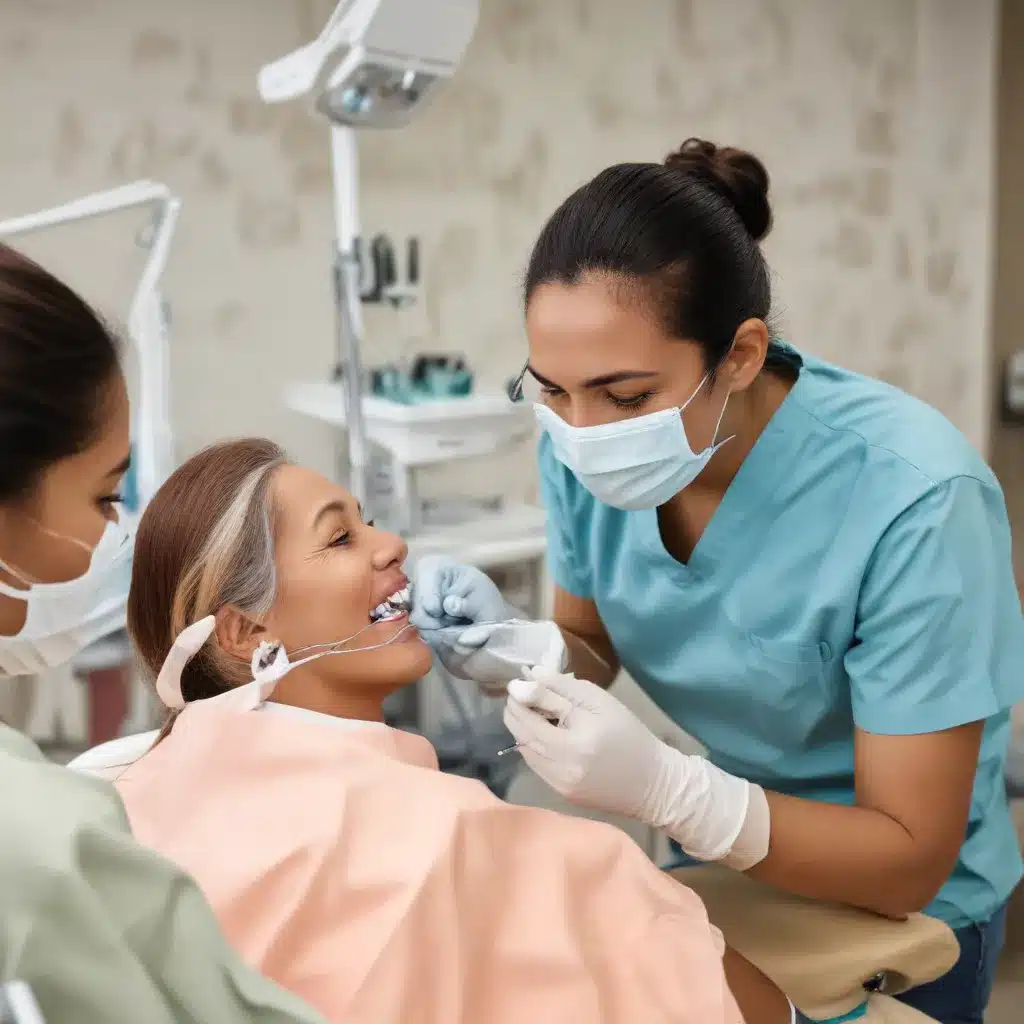
Shift in the Right Direction: Making Dental Care More Accessible for Underserved Communities
The Urgent Need for Inclusive Dental Care
Dental care remains inaccessible for many individuals, especially those from marginalized and underserved communities. According to the American Psychiatric Association, approximately 3.32 million Americans have an intellectual disability. Additionally, 4.2 million Americans over 40 have uncorrectable visual impairments, and 12.1% of U.S. adults have a mobility disability. These statistics highlight the pressing need to make dental services more accessible and inclusive for people with diverse abilities and backgrounds.
Individuals with disabilities often face significant barriers to receiving high-quality oral healthcare. A systematic review by the NIH found that people with disabilities have more severe oral health issues compared to those without disabilities. The main obstacles include high treatment costs, dentists’ lack of preparation to provide specialized care, and inaccessible dental facilities. Addressing these challenges is crucial to ensuring equitable access to dental services.
“By training future dentists on how to manage care for patients with disabilities, the future dentist will feel more comfortable doing so, and thus these patients will have an easier time finding providers who feel comfortable and confident managing their care.”
In recent years, some dental schools have begun emphasizing education on treating patients with diverse needs. The University of Pennsylvania School of Dental Medicine and New York University College of Dentistry, for example, have opened specialized clinics to provide care for individuals with intellectual, physical, and medical disabilities. These initiatives allow dental students to gain hands-on experience working with a variety of patient populations, better preparing them to serve underserved communities upon graduation.
Beyond the classroom, organizations like the American Academy of Developmental Medicine & Dentistry (AADMD) are also working to improve oral healthcare for people with intellectual and developmental disabilities. By engaging in community outreach and advocating for policy changes, AADMD and similar groups are driving progress in this critical area.
Technological Advancements Improving Accessibility
Advances in dental technology have also positively impacted the accessibility and quality of care for underserved populations. Digital radiography, for instance, has reduced radiation exposure and made the diagnostic process more efficient. Similarly, intraoral scanners have enabled dentists to capture accurate digital impressions, improving patient comfort and reducing the need for repeat appointments.
Three-dimensional (3D) printing has revolutionized the creation of dental prosthetics and restorations. This technology allows for the production of highly customized, cost-effective, and time-saving solutions. By leveraging 3D printing, dental professionals can better meet the unique needs of their patients, including those with physical and developmental disabilities.
“The integration of new technology into dental education has enhanced the learning experience for students, preparing them for a successful and rewarding career in the field.”
Simulation technology is another valuable tool in dental education, enabling students to practice procedures in a safe, controlled environment. This approach helps aspiring dentists develop their skills while minimizing the risk of patient harm – a crucial consideration when treating individuals with special needs.
Innovative technologies, such as dental lasers and facial scanners, have also improved patient outcomes by making procedures less invasive and enhancing treatment planning. Facial scanners, for example, allow dentists to create detailed, customized treatment plans that consider each patient’s unique oral anatomy and facial structure.
As technology continues to advance, it will be essential for dental professionals to stay up-to-date and adapt their practices to provide the highest quality of care for all patients, regardless of their abilities or backgrounds.
Addressing Disparities through Community Engagement
Improving accessibility and inclusion in dental care requires a multifaceted approach that goes beyond technological advancements. Meaningful community engagement and advocacy efforts are equally vital to driving positive change.
Community-based initiatives, such as the Villanova Special Olympics event and Community Day at a school for children with cerebral palsy, offer valuable opportunities for dental students to interact with and learn from individuals with diverse needs. These experiences not only enhance students’ clinical skills but also foster empathy, cultural competence, and a deeper understanding of the challenges faced by underserved populations.
“Through these curricular changes, future dental providers may feel more comfortable in managing the care of individuals who make up a significant portion of the U.S. population.”
Advocacy efforts, such as those undertaken by the AADMD, are also crucial in addressing systemic barriers to dental care. By engaging policymakers, promoting inclusive legislation, and raising public awareness, these organizations help ensure that the needs of marginalized communities are prioritized and addressed.
As dental professionals continue to advocate for and implement inclusive practices, it will be essential to collaborate with community partners, healthcare providers, and policymakers. Only through a comprehensive, multisectoral approach can we truly make progress in ensuring that all individuals have access to high-quality, accessible dental care.
Conclusion: A Shared Responsibility
Providing inclusive and accessible dental care for underserved populations is not solely the responsibility of the dental profession. It requires a concerted effort from dental schools, professional organizations, policymakers, and the broader community.
By emphasizing disability-focused education in dental curricula, investing in specialized clinics and community outreach, and advocating for policy changes, we can create a future where all individuals, regardless of their abilities or backgrounds, can access the dental care they need and deserve.
“Without students who are willing to treat these populations, critical components of education may be lost and this population who currently has unequal access to care would not benefit.”
Leveraging technological advancements and embracing a holistic, community-driven approach are essential steps in this journey. As we work to shift the dental landscape, it is our shared responsibility to ensure that no one is left behind. By prioritizing inclusive and accessible care, we can improve oral health outcomes, enhance overall well-being, and create a more equitable healthcare system for all.
The Joint Action for Water blog is committed to amplifying the voices and experiences of underserved communities. We encourage our readers to continue engaging with this critical issue and to support the initiatives and organizations working tirelessly to make dental care more accessible and inclusive.

